Posted on: August 1, 2024, 01:02h.
Last updated on: August 1, 2024, 01:04h.
The history of Las Vegas has an unusual adversary: The people who own its landmarks.
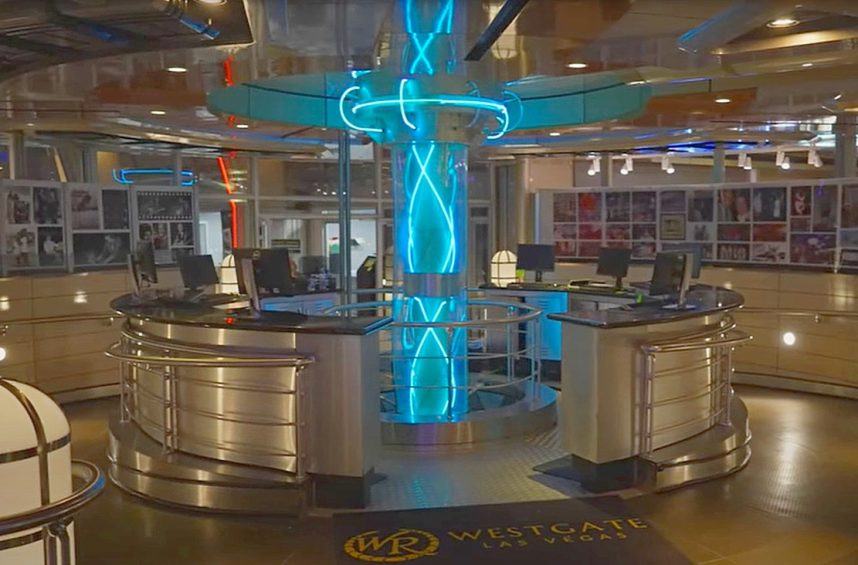
Every time Las Vegas explodes, it seems, it implodes first. Virtually nothing from the Strip’s early history — the Desert Inn, Sands, Dunes, Stardust, and now even the Tropicana — still stands.
Though the Neon Museum is a great place to experience the glory of classic Vegas, there are also hidden remnants, ones you weren’t meant to know about, that have been forgotten by time and the wrecking ball.
“Star Trek: The Experience”
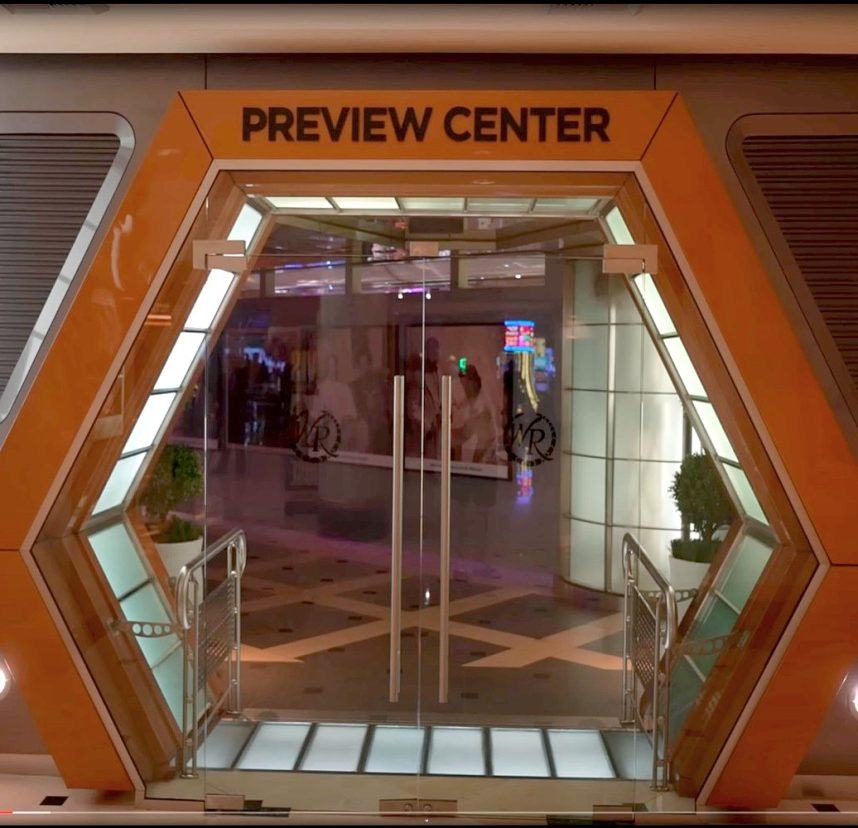
“Star Trek: The Experience” opened in January 1998 at the Las Vegas Hilton, now the Westgate.
It transported guests onto the bridge of the Starship Enterprise, where the main characters from “Star Trek: The Next Generation” gave them a mission on view screens. Guests were then ushered into a domed theater for a ride on a simulated shuttle ride during which they dodged Kingon fire.
The attraction closed in September 2008 and was scheduled to reopen at the Neonopolis Mall in May 2009, in time for the premiere of J.J. Abrams’ first franchise reboot film. But the opening was then pushed back to 2010, and in 2011, to never.
But many of the lights, hatches, and other décor remain.
Make a left near the entrance of the Wesgate, into the Preview Center, along the walk to the monorail. There you will need to dodge the most evil entities in the known universe…
Timeshare salespeople. It’s their office now.
Holiday Casino
Looking eerily like the wreckage of a sunken ship, a small part of the upper deck of riverboat façade from the original Holiday Casino is still visible from inside Harrah’s, parts of which were built around and atop the original structure.
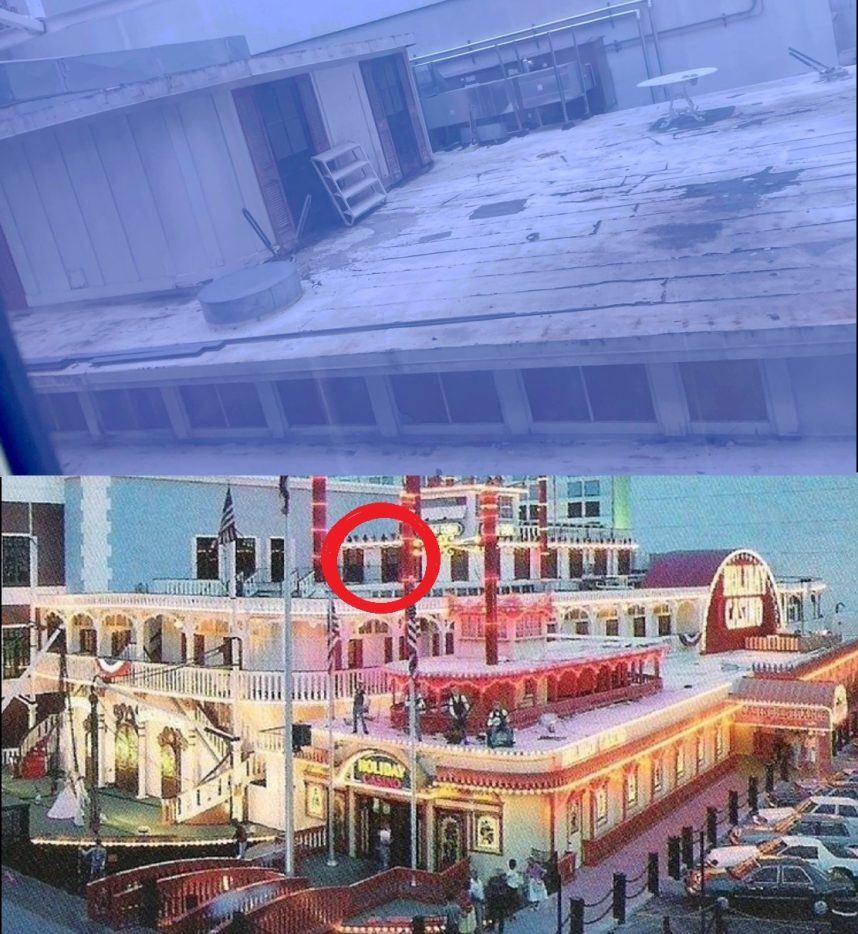
The Holiday was opened in July 1973 by investors including Shelby Williams, who served as the casino’s president and chair. Upon his 1977 death, it was run by his wife Claudine. In 1979, Holiday Inn, which operated the hotel next door, purchased 40% of the casino, then bought the other 60% in 1983.
In 1989, the Holiday added a 35-story 734-room tower, which made it the largest Holiday Inn in the world.
A 1990 renovation made the casino into an even bigger riverboat, 450 long with an 80-foot wide paddlewheel and 85-foot tall smokestacks. Two years later, the name of the casino hotel was changed to Harrah’s, which owned Holiday Inn. In 1997, Harrah’s renovated the “Ship on the Strip,” replacing the riverboat façade with a Mardi Gras theme.
You’ll need to know someone who works at Harrah’s to see this relic, though. It is best viewed through a window located on a staircase backstage in one of the theaters.
Signs of the Original Mint
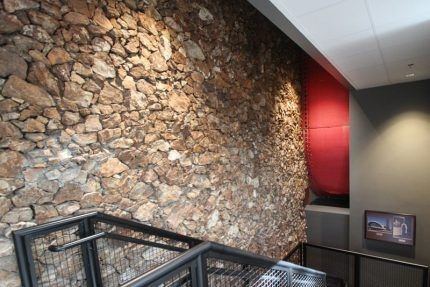
In 1988, the legendary Mint downtown was absorbed into the neighboring Binion’s Gambling Hall, then called Binion’s Horseshoe. Binion closed all 365 of the Mint’s hotel rooms in 2009, including Room 1850 in the tower, where most of the action in Hunter S. Thompson’s novel, “Fear and Loathing in Las Vegas,” supposedly took place.
One beyond-intrepid Australian writer recently trespassed on the shuttered tower by taking an elevator to the roof of the adjoining Hotel Apache and climbing down a fire escape.
All we are willing to advise you here is that the lower portion of the original pink Mint sign and an old wood wall from the classic resort can be seen in the stairway leading down to Whiskey Licker Up Saloon at Binion’s.
The Marina Hotel
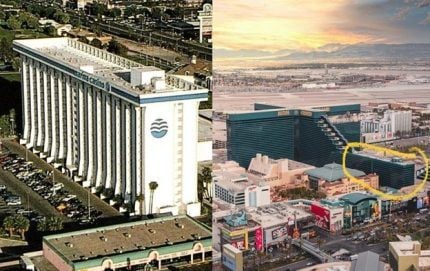
In 1989, MGM bought and demolished the Marina Hotel to build its new MGM Grand. The old MGM Grand, tainted by the second-deadliest hotel fire in American history, had by then become Bally’s and, since 2022, has gone by Horseshoe Las Vegas.
Except, MGM never demolished the Marina. It simply gave it a green skin and built the new MGM Grand around it. Few realize that MGM’s west wing once stood alone as this 714-room hotel opened in 1975.
If you’ve ever wondered why the rooms there are smaller and less expensive, now you know.
The Train That Created Las Vegas
The question occurring to just about everyone driving to Las Vegas for the first time — why this crazy city exists in the middle of nowhere — is answered by the freight trains that diesel alongside Interstate 15, duck underneath it in Sloan, Nev., and chug a couple of blocks west of the Strip, largely unnoticed, before branching northeast to Utah.
Those trains use the original line that once shuttled passengers from LA to Salt Lake City before commercial flights or even mass-produced cars were things.
Las Vegas wouldn’t exist without that rail line.
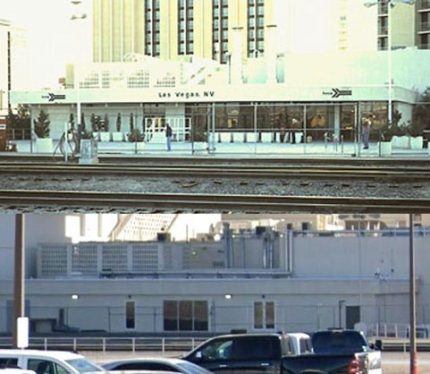
When the San Pedro, Los Angeles & Salt Lake Railroad was completed in 1905, its owners decided to create a stop halfway through the long haul and build a town to make that stop worthwhile. Las Vegas, named in the 1829 by a Spanish trader after the meadows created by underground springs, would do. It was home only to a few ranches and an abandoned Mormon fort at the time.
The railroad bought the ranches closest to its railroad stop, then sold parcels at an auction on Fremont and Main Streets on May 15, 1905. The first was at 1 Fremont St., which the builder of the Hotel Nevada purchased for $1,750. Today, that hotel still stands as the Golden Gate and still has the town’s very first phone on display. (It’s phone number was “1.”)
The original railroad station was demolished in the late 1930s and replaced with an Art Deco update in 1940. That station was demolished in 1971 and replaced by today’s Plaza Hotel, originally called Union Plaza, in deference to the railroad.
Because passenger trains shared the line with freight trains then, the hotel constructed its own station out back — the only one in the US located inside a casino. By then, the line was run by Amtrak. Its last passenger route from Salt Lake City to Los Angeles, the Desert Wind, was discontinued in 1997 due to low ridership. (Because the tracks were shared, a passenger train stuck behind a freight train could easily take 8 hours from LA to Las Vegas, more than twice as long as driving did.)
Though its branding and furnishings are gone, the Plaza’s Amtrak station still exists by the tracks. It’s now an employee break room and storage area. But an Amtrak mural can still be found between a Subway and a gym at the end of a hallway.
“Lost Vegas” is an occasional Casino.org series spotlighting Las Vegas’ forgotten history. Click here to read other entries in the series. Think you know a good Vegas story lost to history? Email corey@casino.org.

